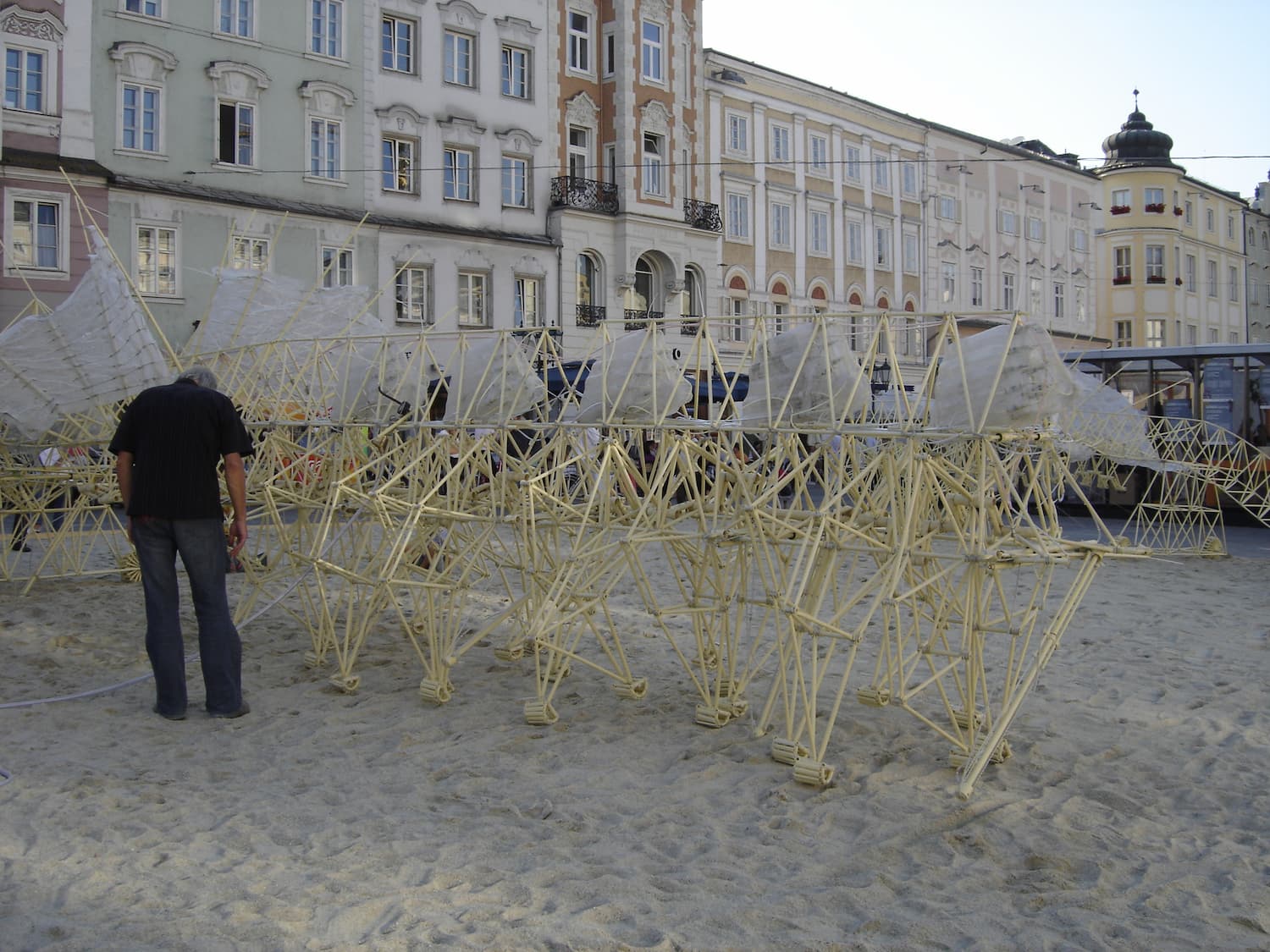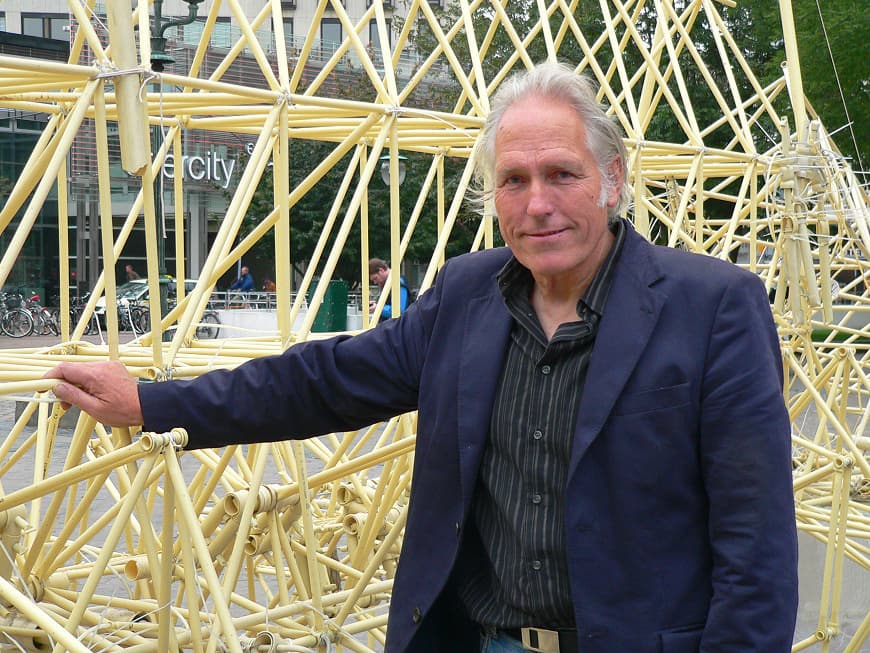There are more than 30 years, a new species has started to inhabit the beaches of Holland
Walking on the sand of certain beaches in Holland are majestic skeletal creatures. all spring, a new generation comes to the beach, while another becomes extinct. As strandbeests, or “sand beasts/beasts”, in Dutch, are kinetic sculptures created by Dutch engineer and artist Theo Jansen.
Kinetic sculptures are sculptures with moving parts and diverse mechanisms, designed to convert form and movement into visual compositions. The work that is often attributed to the beginning of the popularization of these sculptures is Roda de Bicicleta., by French Marcel Duchamp, the iconic inventor of Ready Made.
Jansen's sculptures, however, take a step beyond traditional artistic intentions. Made of yellowish white PVC, tall as cars and arranged like skeletons of mythological animals, the strandbeests are awesome, no doubt, but aesthetic appeal is the last thing the author has in mind when building a new piece.
a new species
Jansen treats his creations like living animals and an evolving species.. On primavera, he brings new sculptures to the beach and observes how they perform throughout the year. After this period, it declares the previous generation extinct and passes it on to the next generation, building its members with the information gained from the success of its ancestors.
The strandbeests move by capturing the beach winds with their sails and propellers.. Some of these spark plugs work like pistons, pumping air into bottles that store this pressurized air, that is released when the beach becomes calm, making the sculpture keep walking. In rain or storm, certain mechanisms prevent the sculpture from being carried, pinning her to the floor, and, when they find water, they are also able to change direction.
Jansen, often, refers to his sculptures as “a new way of life”, and has already stated that his intention is for them to evolve and become independent of him, surviving on their own. The artist claims that if he had one more billion years, at least, that wouldn't be a problem.
His passion for developing strandbeests was born 30 years, when the then engineer had the idea to develop an evolutionary algorithm, who could discover the best possible mechanical configuration to produce a part capable of reproducing a stable walk.
Sign up to receive Event News
and the Universe of Arts first!
It was so, after almost a month of calculations, that the engineer created the Jansen's joint, a mechanical part that can be created from 13 sections of any material and which produces a stable and unique walking motion: the legs of the strandbeests!
In these days, many designs for a Jansen joint can be found on the internet. Artists around the world replicate their creations and invent their own., using PVC and wood pipes, cutting and pasting with circular saws and hot glue guns.
“3D printed animals survive very well and multiply very well. […] I hope they find their way to survive in every living room and every bookcase in the world.”, stated the artist in one of his videos promoting printable templates, available on the internet.
your statement, although casual and full of its consciously playful tone, makes you realize that the strandbeests, in fact, are living without your help, reproducing and becoming a species of its own.


Text prepared by the Conversion team +.



